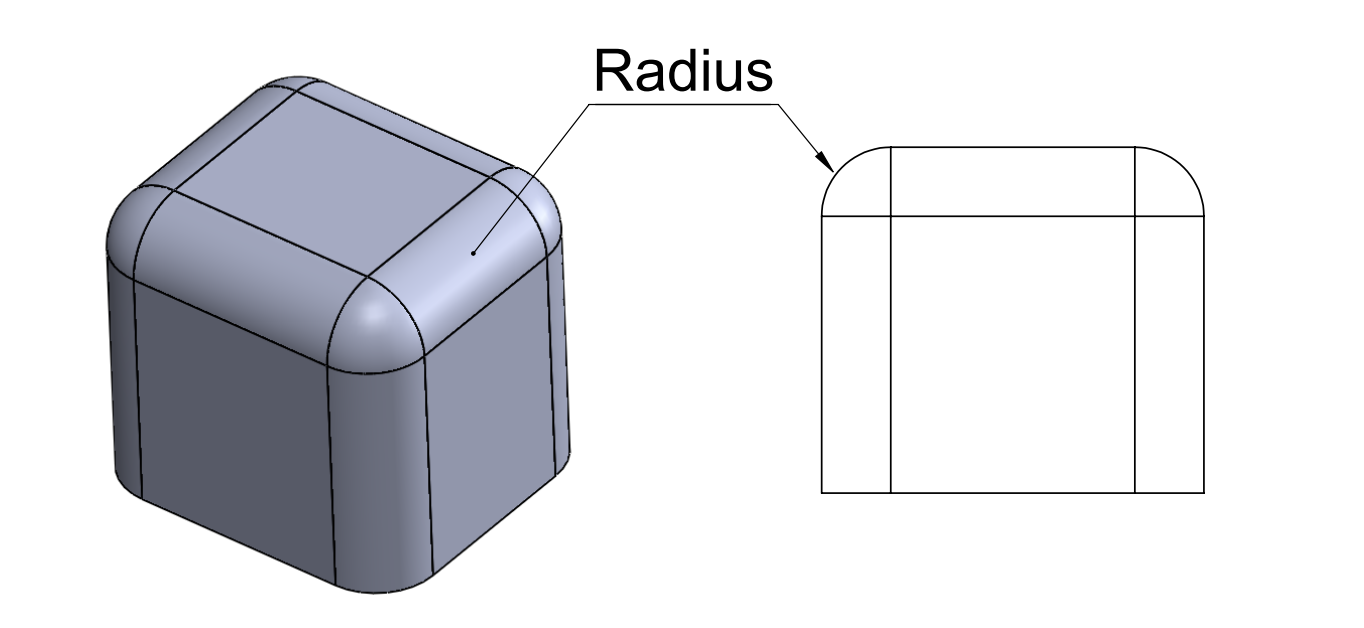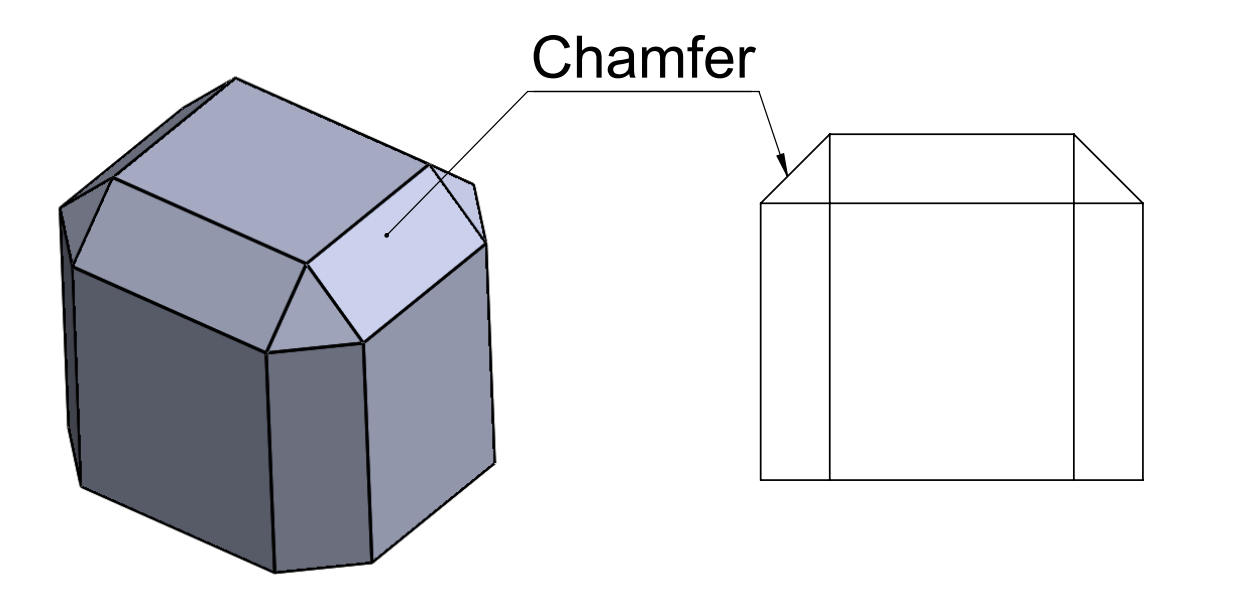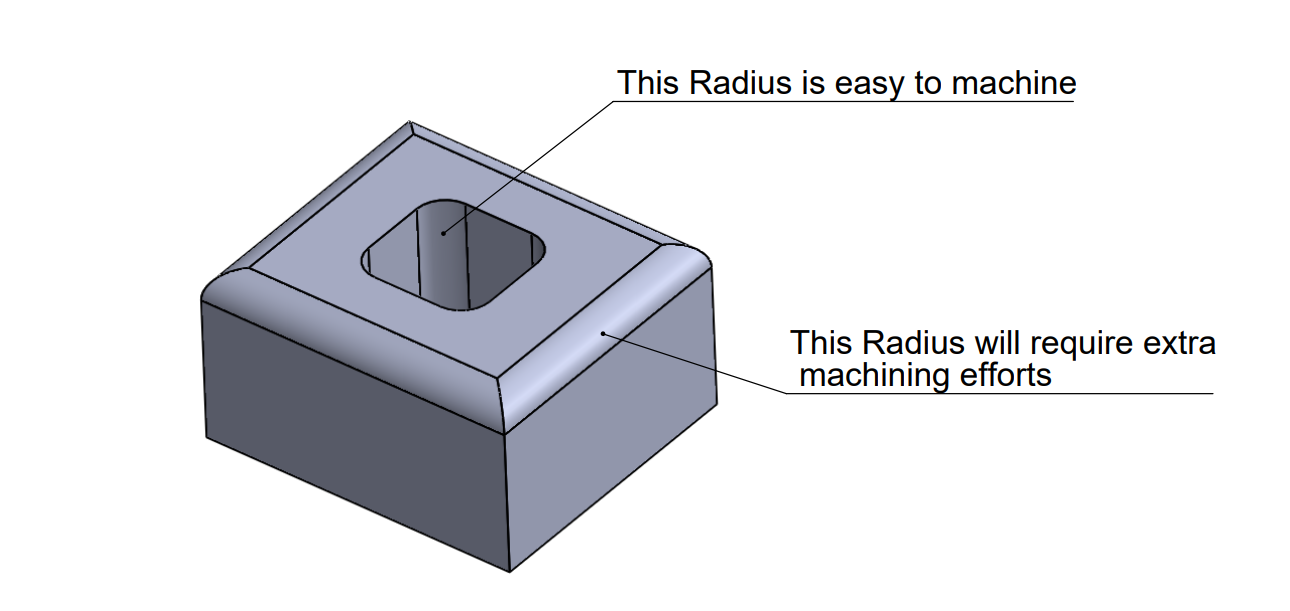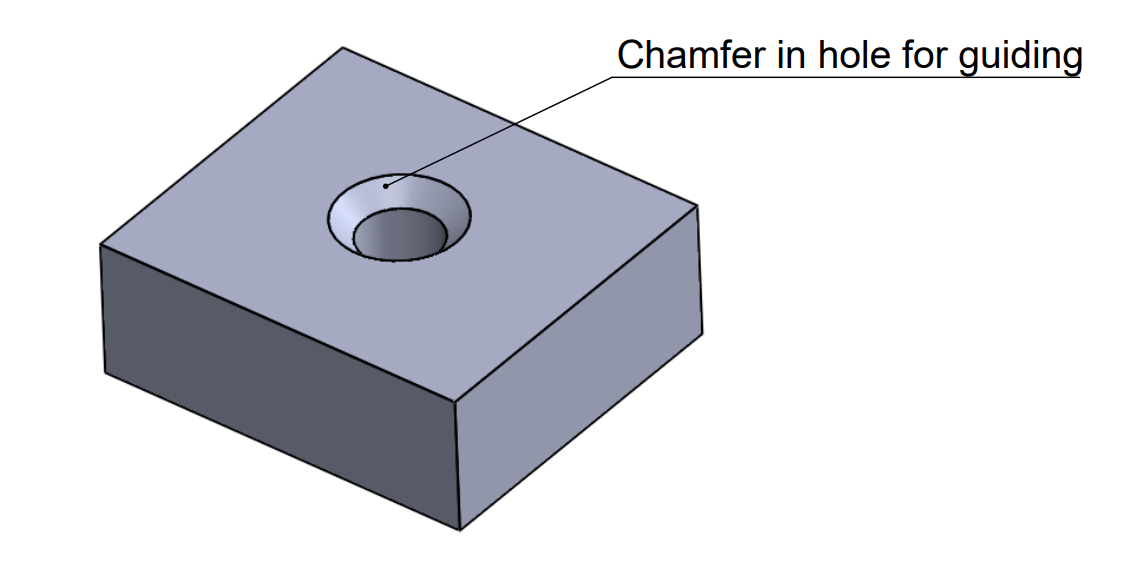Both fillet and chamfer are mechanical features very extensively used in part design. Each of these features has a different application. You can find these features in most of the part designs.
If you are into mechanical design engineering, you must come across this question, whether you should give a chamfer or fillet. This article covers “What is a fillet, and what is a chamfer?” fillet vs chamfer, applications, advantages, and limitations.
Knowing the difference between a chamfer and a fillet will help you in taking the right decision between a chamfer and a fillet.
What is a Fillet?

Fillet is an internal or external round feature at the corner of a part. Exterior fillets are convex, and internal fillets are concave.
Engineers use fillets to distribute the mechanical stress over a large area and avoid a high-stress concentration area.
In plastic part design for injection molding and metal-casting fillets improve material flow. Sometimes we don’t require fillets, but they come up due to machining operation.
What is a Chamfer?

The chamfer is a sloped or angled corner in the internal or external part edge.
Chamfer edges are sharp and have an application in low-stress concentration areas. Sometimes engineers add a chamfer in a corner where high-stress concentration is required because it focuses the mechanical stress in a specific section.
How to select between a fillet and chamfer?
You should consider the following point to select between a fillet and chamfer in part design.
- Stress Concentration
- Product Aesthetics
- Manufacturing Process
- Feature Application
Stress Concentration
As discussed above, Engineers use fillets to distribute the mechanical stress over a large area and avoid a high-stress concentration area. Whereas, Engineers add chamfer where high-stress concentration is required.
Product Aesthetics
Engineers add chamfer and fillets to improve the aesthetics of a product. Here the fillet or chamfer is selected according to product aesthetic requirements.
- In industrial design, Fillets are more preferred than chamfer.
Manufacturing Process
Adding a fillet or chamfer in design also impacts part manufacturing. Therefore you should also consider the part manufacturability during the selection of fillet or chamfer features.

It is easy to add a fillet parallel to the machining axis. Whereas adding a fillet in a perpendicular direction will increase the part cost. Therefore a chamfer is preferred in the direction perpendicular to the machining axis.
A single tool can create different size chamfer. But to create a different size radius, that radius-specific tool is required.
- A chamfer may require less machining time than a fillet in manual machining operation.
Injection Molding or Casting Process
- Fillets improve the material flow during the casting and injection molding process.
Feature Application

- Application of a Hole or slot also impacts the selection between a fillet and chamfers. A chamfer is preferred for pin insertion, bolt into a part, and screw drive.
What is the difference between Fillet and Chamfer: Fillet vs Chamfer
| Parameter | Fillet | Chamfer |
|---|---|---|
| Feature | Fillet is an internal or external round feature at the corner of a part. Exterior fillets are convex, and internal fillets are concave. | The chamfer is a sloped or angled corner in the internal or external part edge. |
| Stress Concentration | Engineers use fillets to distribute the stress over a large area and avoid a high-stress concentration area. | Engineers add a chamfer in a corner where high-stress concentration is required because it focuses the mechanical stress in a specific section. |
| Tooling required | Fillets require specific size Tooling. | Chamfer doesn’t need any particular size of tooling. |
| Machining Cost |
Low : If fillet is in the axis parallel to Machining. High: If fillet is in the axis perpendicular to machining. | Low |
| Edges | Smooth. | Sharp. |
We will keep adding more information on Radius and chamfer features in part design. Please add your suggestions, comments, or questions on the Difference between a radius and chamfer.

Add a Comment